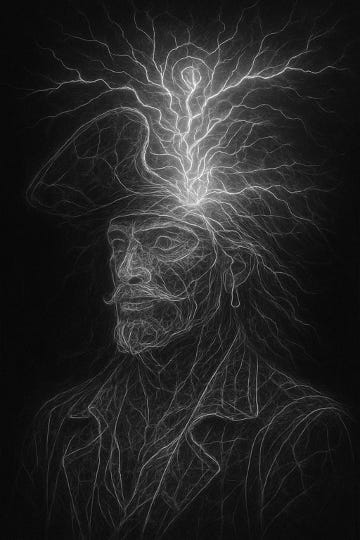I've noticed that Jews have recently lost cultural prominence and no longer seem to direct the zeitgeist. They've largely gone the way of WASPs in terms of social influence. Today, it seems that nearly all of our culture is downstream from three groups.
Brothas, Queers, and Chuds: The Three Generative Cultures
Brothas (black people who are culturally black): The entire incel/gender war was happening in the black community 3 years before it hit the rest of us. This is why modern misogyny feels so thuggish and flashy—it came from black men. It's also why modern misandry feels so abrasive and garish—it came from black women.
Queers (gay men and transsexuals): Tranny culture is why video games, art, and media look so ugly. It's been slowly laundered through feminist designers who like the aesthetics because they hate normal masculinity, things men find attractive, women hotter than them, and beauty in general. Examples include Steven Universe, female romance options in any RPG made after 2019, and any female main character (Star Wars Outlaws, Horizon Forbidden West).
Chuds (internet racists): This group has only recently gained cultural influence. Today, much of what the alt-right was saying—along with its aesthetics and memes from a decade ago—has been absorbed into the modern conservative movement. These ideas are now echoed by right-of-center tastemakers and even many apolitical individuals.
If you want to see the world of tomorrow, look at the discourse and content created by these three groups. You can bet the future will be some combination of them. It will be gay, misogynistic, black, and racist.
Why Them?
Politically, these groups have nothing in common. They don’t share interests, values, or personality traits. Their average IQs differ significantly. They generally don’t get along—chuds usually hate blacks, blacks casually mock queers, and queers always hate chuds and vice versa.
So why them…?
Each of these groups is alienated from mainstream culture and institutional power but is also in proximity to it.
Chuds have only recently gained prominence in the last five years. In the past, they spent their days bitching on 4chan and simmering on Twitter. Their trolling has paid dividends, and now they occupy staffer roles for politicians throughout the GOP. Still, some of their more controversial takes remain at the outer edge of the Overton window.
Blacks have gained cultural prominence since the 1960s, especially in music and sports. Despite this, they rarely own record labels or sports teams. They are also alienated from political power and are mostly represented by lukewarm, mixed-race figures like Obama or Cory Booker, or by normie white Democrats.
There’s a reason the face of the LGBT movement is a rainbow flag: poppers, anal sex, and turning genitals inside out are unpleasant thoughts for the straight population. Their curated personas grant them cultural power—a media-driven masquerade that smuggles their subversive peculiarities into the heart of mainstream culture. Queers are more accepted than ever, yet they often feel alienated from those around them—allies who, despite accepting them, are not like them and don’t see the real them.
This alienation breeds a kind of heat. It creates a need to express, to mock, to joke, to create. It’s not polished. It’s raw. They don’t ask permission. They shitpost. They remix. They produce style. They generate mythology.
So they are motivated by discontent and alienation. But where does their creative ability come from?
What Makes them Culturally Generative?
There are essentially two ways of viewing any complex object or system: intrinsic and extrinsic.
To put it in the terms of Robert Pirsig from his book Zen and the Art of Motorcycle Maintenance:
Classical thinking – logical, analytical, structured (how a motorcycle works)
Romantic thinking – intuitive, aesthetic, experiential (how riding a motorcycle feels)
East Asian societies have long favored the former, emphasizing harmony through structure, discipline, and systematized thought. In contrast, Sub-Saharan African cultures are deeply rooted in the latter—prioritizing rhythm, expression, and a felt sense of reality. The West, for its part, has historically tried to strike a balance between the two, though never without tension and sometimes leaning towards one or the other.
Creativity lives in the latter.
It is the spark that doesn’t fit neatly into a flowchart, the impulse that defies logic yet speaks a deeper truth. True innovation often comes not from perfect planning, but from dancing on the edge of chaos. In Nietzschean terms, these groups are Dionysian. Unruly, impulsive, chaotic, expressive.
How to Be More Creative
We often describe creativity as “thinking outside the box.” It’s an apt phrase, but it misses something. Creativity isn’t always about just escaping the box—it’s often about seeing the box.
Not the front, back, sides, tape, opening, or any particular piece of cardboard—just the box as a whole.
This is a romantic perception: seeing the essence of a thing. Not how it works, but what it is. Not the engineering, but the myth.
It’s a feeling. A distortion. A kind of perception that feels dreamlike, funny, tragic, and holy—all at once.
The Political Implications of Creativity and Archetypes
Online culture has become a breeding ground for modern myth-making. From Gigachad to Pepe, Wojak to Groypers, Soyjak to Chudjak, these aren't just memes—they’re archetypes, compressed expressions of collective feeling, identity, and conflict. Like ancient gods, they represent fragments of the human experience, distilled into low-res symbols that move faster than thought.
Creativity doesn't merely entertain—it shapes political consciousness. A single image of Wojak in pain can communicate alienation more effectively than a thousand essays. A smirking Groyper can channel irony, superiority, or conspiratorial glee depending on the context. These figures evolve organically, unconsciously, from the digital ether—and that is precisely where their power lies.
Whereas traditional politics relies on classical thinking—policy, debate, institutional logic—the memetic realm is governed by Romantic logic. It is aesthetic, emotional, and experiential. It seduces rather than convinces. And in that sense, it bypasses the rational filters that modern liberalism depends on.
Each meme archetype carries political weight.
Gigachad embodies strength, stoicism, and physical excellence.
Pepe, in his many forms, oscillates between irony, sadness, hope, and rebellion.
Wojak the everyman fractured by modern life—alienated, frustrated, sometimes aware, sometimes blind.
Soyjak is the effigy of the compliant consumer, the emasculated progressive.
Chudjak is deployed both in mockery and in our case a mirror.
These aren’t just jokes. They’re masks that entire online tribes wear—and through them, project a vision of the world.
The political implications are vast. The left, traditionally aligned with creativity and cultural production, now finds itself upstaged in certain corners of the internet by a new, chaotic right—one that understands the power of aesthetics, irony, and emotional storytelling. Memes are the new propaganda posters, but decentralized, leaderless, and self-replicating.
In a world, where institutions are losing legitimacy and attention is the most valuable currency, creativity is power. And those who control the symbols control the future.











